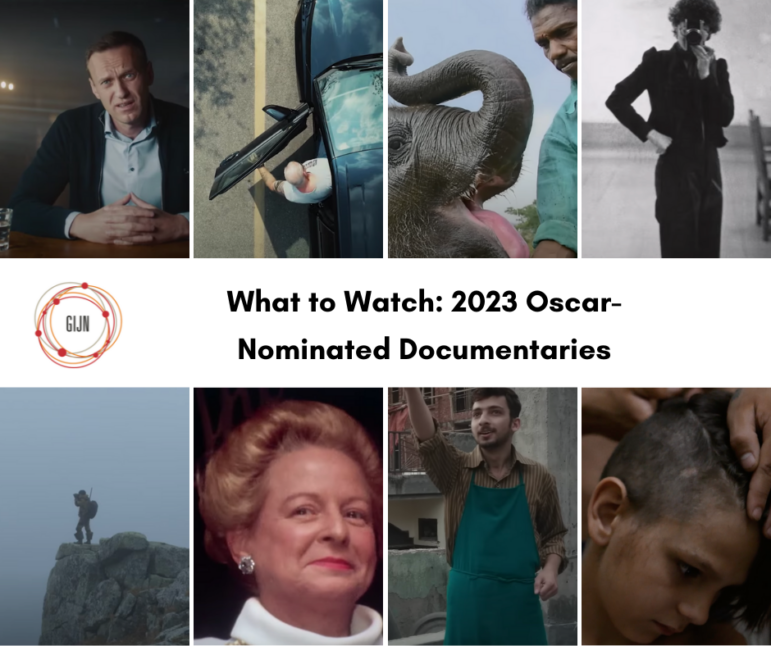

Russian anti-corruption activist Alexey Navalny, though not a journalist himself, was a bold crusader against graft and a tireless advocate for public accountability. Image: Shutterstock
How Alexey Navalny Was Inspired by — and Inspired — Investigative Journalism in Russia
While not a journalist himself, the anti-corruption campaigner Alexey Navalny proved that anyone, after training and practice, can master new investigative tools to expose rights abuse at the highest levels of any government and have an outsized impact with viral video on social media channels. Navalny also provided a last-ditch methodology path for watchdog reporters — from Telegram bots and aerial drones to the unorthodox use of sources — to dig into state-backed crime that even law enforcement doesn’t dare investigate.
On February 16, Russia’s prison service announced that Navalny had died while he was being incarcerated in a remote arctic penal facility on charges of “extremism.” While details on his death remain unclear, Vladimir Putin’s chief critic ultimately died after having chosen to return to Russia in 2021 in the wake of an attempt on his life in August 2020. The use of the nerve agent to poison Navalny pointed to Russian security services as behind the attack.
In late 2020, Navalny had made an audacious phone call to his would-be assassin for a Bellingcat investigative project about the attempted murder. Bellingcat executive director Christo Grozev thought there was no way Navalny could convince a state assassin that he was a security service bureaucrat demanding a report on the operation’s failure, but he did just that in an extraordinary 45-minute “interview,” and extracted a confession about how Russian security services laced his underwear with Novichok.
In 2012, Navalny founded the nonprofit Anti-Corruption Foundation (FBK) in Russia as an investigative check on the rampant kleptocracy developing in that country. While FBK is not an independent journalism outlet — it is now banned in Russia — and watchdog reporters like Roman Anin, editor of Russia’s IStories, have previously cautioned that its staff “don’t follow journalistic standards and never try to listen to the other side,” Anin also conceded in 2020 that FBK was “probably the most effective investigative media outlet in the country.”
Other editors, such as Roman Shleynov, Russia regional editor for the Organized Crime and Corruption Reporting Project (OCCRP), have also agreed that FBK consistently produced powerful, evidence-based investigations. In an email interview during the peak of the group’s impact in 2021, Shleynov told GIJN that FBK researchers used the “same tools and methods” that many investigative reporters were already using — and that FBK offered lessons for journalists on a “better approach to the audience.”
Navalny himself was frequently the presenter or narrator of viral FBK anti-corruption documentaries that garnered tens of millions of views on YouTube. Among these was FBK’s iconic “A Palace for Putin” investigation (see video below), which revealed the true ownership of a vast presidential compound on the Black Sea funded by US$1.35 billion in public funds meant for Russian healthcare. Navalny also championed the use of publicly available evidence of no-fly zone maps around sensitive sites — data that had rarely been used by investigative journalists previously.
In an interview for GIJN in 2021, Maria Pevchikh, head of investigations at FBK, revealed that FBK’s modest anti-corruption team started with neither any journalistic nor investigative experience. She noted that while Navalny was originally trained as a lawyer, he was determined to learn some of the methods of investigative and data journalism, and took lessons from a coding colleague, Georgy Alburov, on how to use the Python computer language.
She said Navalny’s leadership, and the existential need of Russia’s citizens to learn the truth about their government, compelled their small team of researchers to develop several investigative methods for their work.
- Learn to use open source investigative tools in combination. For instance, to prove that Putin’s banker had gifted a super-yacht to his mistress, FBK’s team used tools like MarineTraffic and FlightRadar in combination to search yacht departures from European port cities that happened within 24 hours of the arrival of a private jet previously gifted to that same mistress. There’s a classic moment that illustrates both Navalny’s obsession with evidence and his mischievous, deadpan nature (see this video from the three-minute mark). While narrating this documentary, Navalny — seeking to confirm the romantic connection between Putin’s banker and his mistress — appears on camera casually seated on a park bench in New York’s Central Park. He shifts to one side to reveal a brass bench plaque publicly dedicated to the secret pair — a confirmation essentially “written in stone.”
- Produce their investigations in video format. Pevchikh said Navalny was quickly vindicated in his belief that viral video could have much greater impact than text investigations, as several FBK anti-corruption investigations quickly gained many more views than more rigorous text-based investigations in major media, such as The New York Times. Pevchikh told GIJN that she recommended that all investigative reporters turn their biggest stories into video, whenever possible.
- Anticipate state surveillance. Pevchikh revealed that Navalny asked his attorney to stroll around the tourist city of Sochi with the team’s cell phones in his pockets in order to confuse Russian state surveillance, while they were, in fact, aboard inflatable boats on the Black Sea, to launch their own surveillance drone towards Putin’s secret residence.
- Get creative. The team found that collaborating with services that can produce 3D models of data — and using aerial drones for evidence — can move public opinion on autocrat behavior.
- Include raw evidence for transparency. FBK became well known for populating their text and documentary projects with raw documents and emails, such as their investigation into former Russian president Dmitry Medvedev.
- Try Telegram chat bots. Although the Palace investigation was largely low-tech, the team occasionally used Telegram bots, like getContacts, to acquire contact information for sources and targets from data items such as car registration numbers and traffic fine records.
- Entertain audiences with evidence of brazenness. Let’s face it: autocrats often make claims or excuses for their corruption that are so absurd as to be hilarious — and hilarity can drive investigative impact as well as outrage. For instance: the official claim made by South Africa’s former president, Jacob Zuma, that vast amounts of taxpayer money was rightly spent to build a luxury swimming pool at his private residence because it could just help firefighters in an emergency… was ridiculous to the point of being funny. As was recently noted by The Atlantic: one of Navalny’s investigative talents was that “he could take the dry facts of kleptocracy—the numbers and statistics that usually bog down even the best financial journalists — and make them entertaining.” However, experts warn that — while they can be comfortable with revelations about their corruption — mafia bosses, including some autocrats, are often most violent after being mocked.
The Novichok poisoning of Navalny in the Russian city of Tomsk, in August 2020, was a seismic moment for investigative journalism, for several reasons — including the fact that no law enforcement agency in the world was willing to investigate the attempted murder of Navalny with a chemical weapon. It was left to investigative journalists to fill that massive accountability void.
Reporters from investigative nonprofit Bellingcat and Russia’s The Insider, supported by CNN and Der Spiegel, stepped forward — and needed just three months to implicate Russia’s FSB domestic security service for the Novichok nerve agent attack. In a powerful webinar by GIJN, Christo Grozev explained how journalists — in collaboration with Navalny himself — used reverse phone search tools, Telegram bots, undercover calls, reverse image search, and even black market data to reveal the state actors behind this atrocity.
Navalny was both the focus and inspiration for a film, “Navalny,” about the investigation into his poisoning, which won an Academy Award for Best Documentary Feature in 2023 and provided a global showcase for advanced digging and accountability techniques.
 Rowan Philp is GIJN’s senior reporter. He was formerly chief reporter for South Africa’s Sunday Times. As a foreign correspondent, he has reported on news, politics, corruption, and conflict from more than two dozen countries around the world.
Rowan Philp is GIJN’s senior reporter. He was formerly chief reporter for South Africa’s Sunday Times. As a foreign correspondent, he has reported on news, politics, corruption, and conflict from more than two dozen countries around the world.








